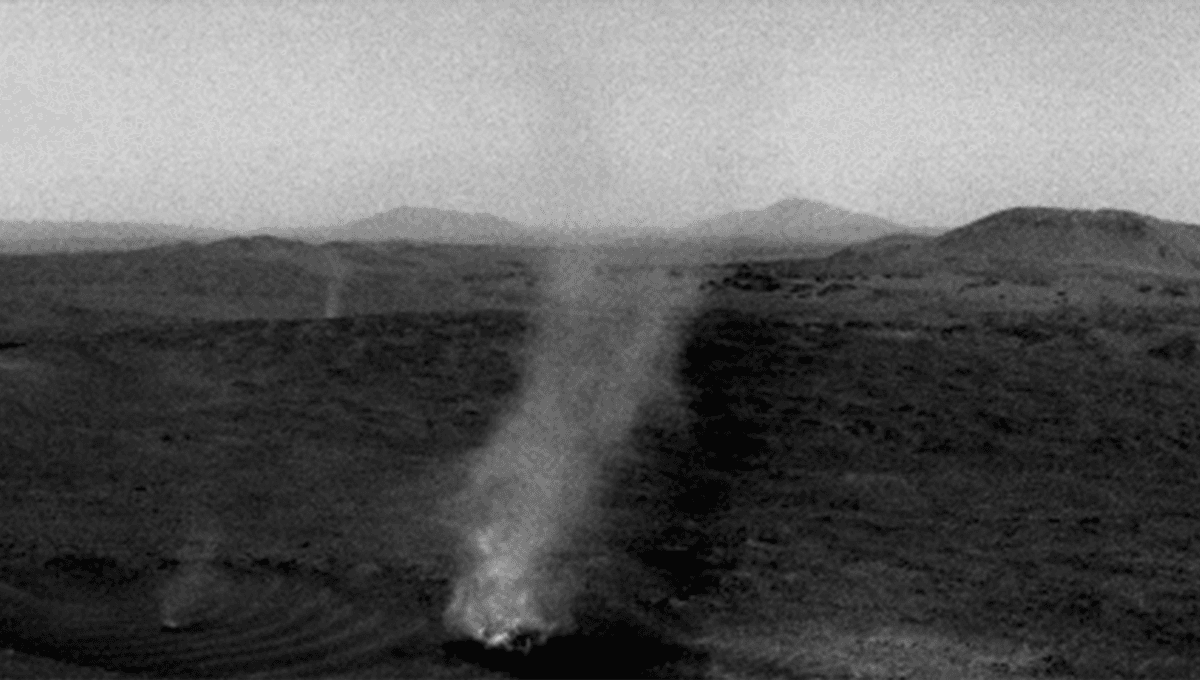
NASA’s Perseverance rover has captured unexpected footage of one dust devil consuming another during an imaging experiment.
While exploring the Witch Hazel Hill area of the Jezero Crater, the Perseverance science team took an opportunity to conduct an imaging experiment aimed at getting a better understanding of the Martian atmosphere. When it did, its cameras captured a number of dust devils swirling away in the distance. In the foreground, it captured a dust devil around 65 meters (210 feet wide) colliding with a 5-meter (16-foot) wide devil trailing just behind it.
“Convective vortices – aka dust devils – can be rather fiendish,” Mark Lemmon, a Perseverance scientist at the Space Science Institute in Boulder, Colorado, explained in a statement. “These mini-twisters wander the surface of Mars, picking up dust as they go and lowering the visibility in their immediate area. If two dust devils happen upon each other, they can either obliterate one another or merge, with the stronger one consuming the weaker.”
Dust devils, sometimes called “willy willies” in Australia for reasons best known to them, form when air near a planet’s surface gets warmed by it and begins to rise through buoyant forces. Air moving along the surface to take the place of the rising air begins to rotate, and picks up speed as it enters the column, like how you can pick up speed on a roundabout by moving your body and limbs closer to the center. When the air kicks up dust – something Mars has plenty of – it becomes a dust devil, or willy willy.
“Dust devils play a significant role in Martian weather patterns,” Katie Stack Morgan, project scientist for the Perseverance rover at NASA’s Jet Propulsion Laboratory in Southern California, added. “Dust devil study is important because these phenomena indicate atmospheric conditions, such as prevailing wind directions and speed, and are responsible for about half the dust in the Martian atmosphere.”
Other dust devils have been captured on the planet before, including their sound, but this appears to be the first time one has been spotted consuming another.
“If you feel bad for the little devil in our latest video, it may give you some solace to know the larger perpetrator most likely met its own end a few minutes later,” Lemmon added. “Dust devils on Mars only last about 10 minutes.”
By studying dust devils on Mars, scientists hope to learn about wind patterns and surface-atmosphere interactions on the planet, as well as how this dust-lifting affects the planet’s climate over time. While they may look large and impressive, given Mars’s thin atmosphere, they would feel like a particularly dusty gust of wind.
Source Link: NASA's Perseverance Watches As Dust Devil On Mars Gets Eaten By A 65-Meter-Wide Dust Devil